Quality tools inspire excellence
Having a tool in the shop that stands above the others inspires and encourages Yoav Liberman's students.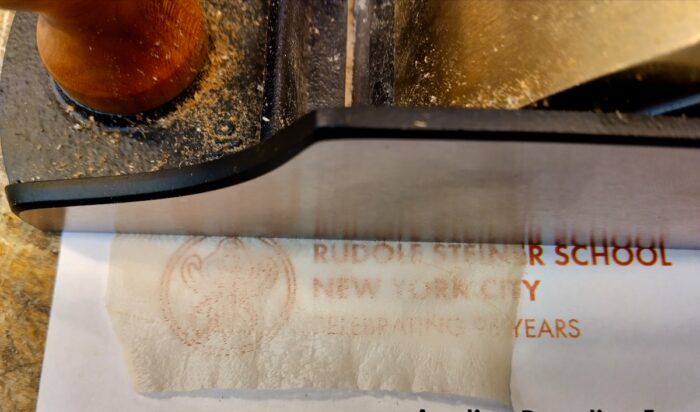
I am fortunate to serve as a woodworking teacher in a school that champions, through creed and curriculum, the interdependency of mind and hand as a way to cultivate human growth. Our students embark on their tactile journies with soft materials like wax, felt, and yarn—forming, felting, and knitting three-dimensional objects. Upon reaching the fourth grade, they step into our woodshop to explore wood’s unique properties—its hardness, elasticity, and grain directionality. After acquainting them with saws, chisels, gouges, and rasps, I introduce them to the plane.
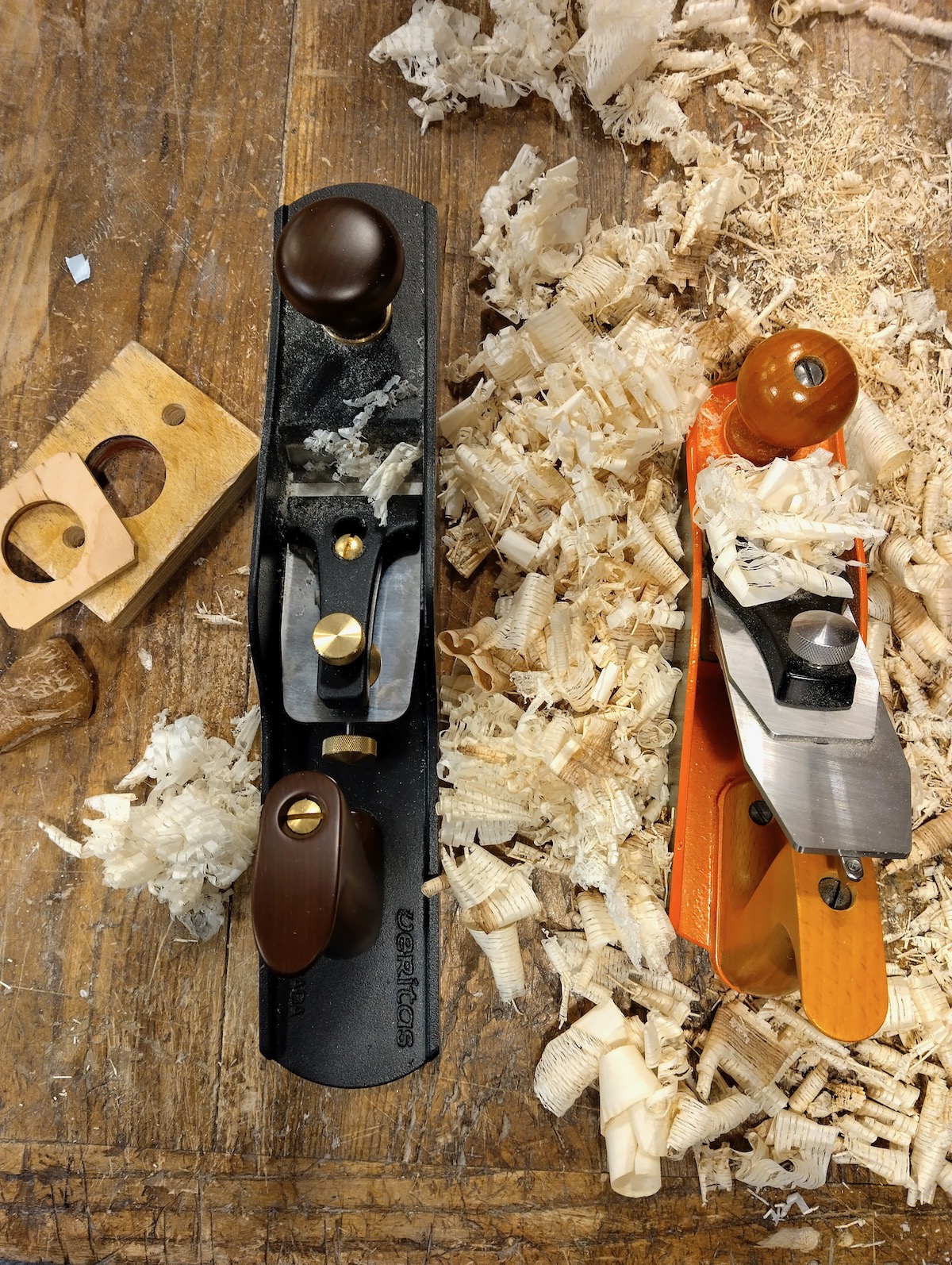
Witnessing a finely tuned tool with a razor-sharp blade effortlessly peeling away thin shavings marks a profound “aha” moment in my students’ immersion into the art of woodworking. The workshop echoes with sounds of astonishment as the lacy strips of hard maple curls emerge from the plane’s throat. Then, when I unravel a thin curl and let them see, smell, and feel its translucent transparency, they are all in complete awe. This experience is transformative, allowing them to grasp the intrinsic nature of wood—a distinct fibrous material. Unlike the fibers encountered in their earlier handwork classes, wood possesses the unique quality of solidifying its layers, unveiling its true colors only when a keen blade skillfully peels away these layers.
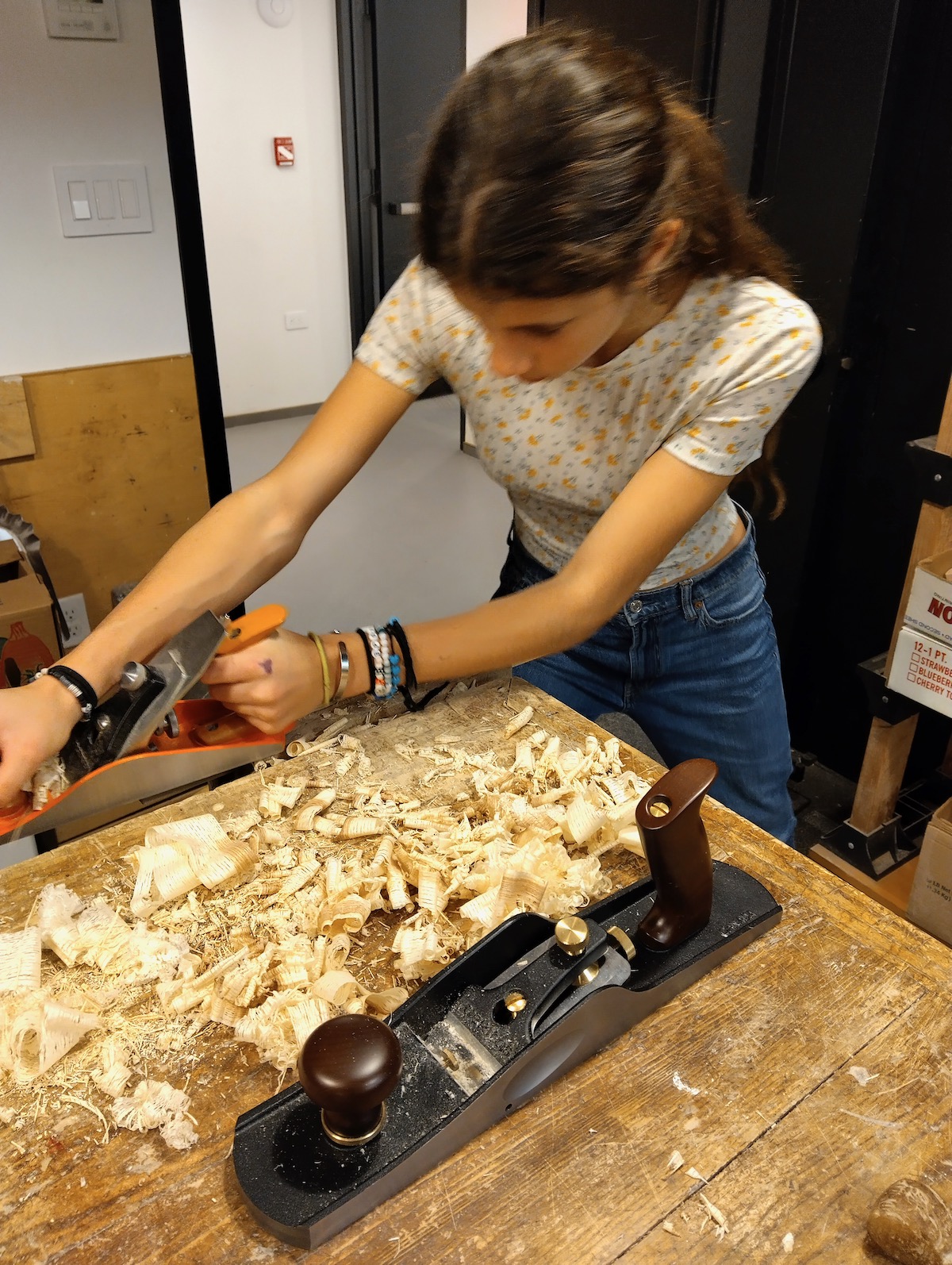
Over the past 90 years, our school’s woodshop has amassed an array of planes, including German planes with their distinct crooked horns, English box-looking planes, and reliable cast-iron tools from both renowned and lesser-known brands. Our active fleet primarily consists of Record #4 smoothers, an American-made jointer (Stanley #5), a newly introduced Jorgensen #4, a Woodriver #3, and a Veritas Low Angle #5 plane. We also have Taytools #4½ and several block planes, including one from Lie-Nielsen.
Our #5 by Stanley Bailey USA, which I meticulously restored a few years ago (I lapped the sole and repaired the broken handle), has evolved into one of our workshop’s finest tools.
Our planes undergo significant use, particularly during the 8th-grade stool-building and 9th-grade box-making classes. As my students engage with various types of lumber—straight grain, the challenging “crazy grain,” domestic softwood and hardwood, and even scraps of exotic wood—I dedicate a considerable amount of time to sharpening and honing these tools.
While I don’t entrust younger students with the sharpening process, I emphasize the importance of treating the tools with respect and operating them carefully and efficiently.
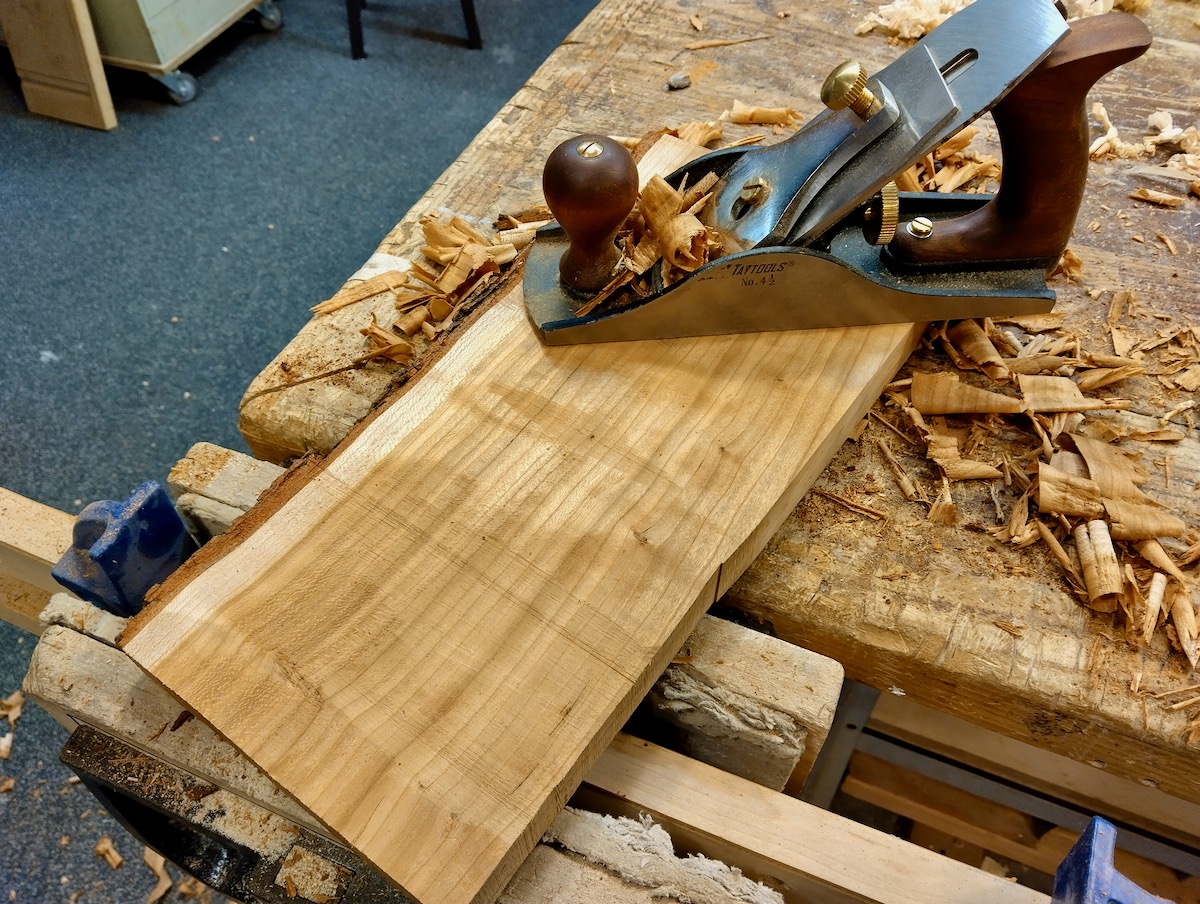
During my first years in this job, I spent time dressing up our oldies, lapping their soles on abrasive paper glued to a granite plate, tuning their chipbreakers, and flattening the backs of each blade. Today, they work great as long as an overenthusiastic student doesn’t attempt to chew off more than the plane can swallow or, in other words, try to project the blade to take insanely thick shavings to speed up the process, only to discover that it’s much harder to plane and most likely will also choke up the mouth.
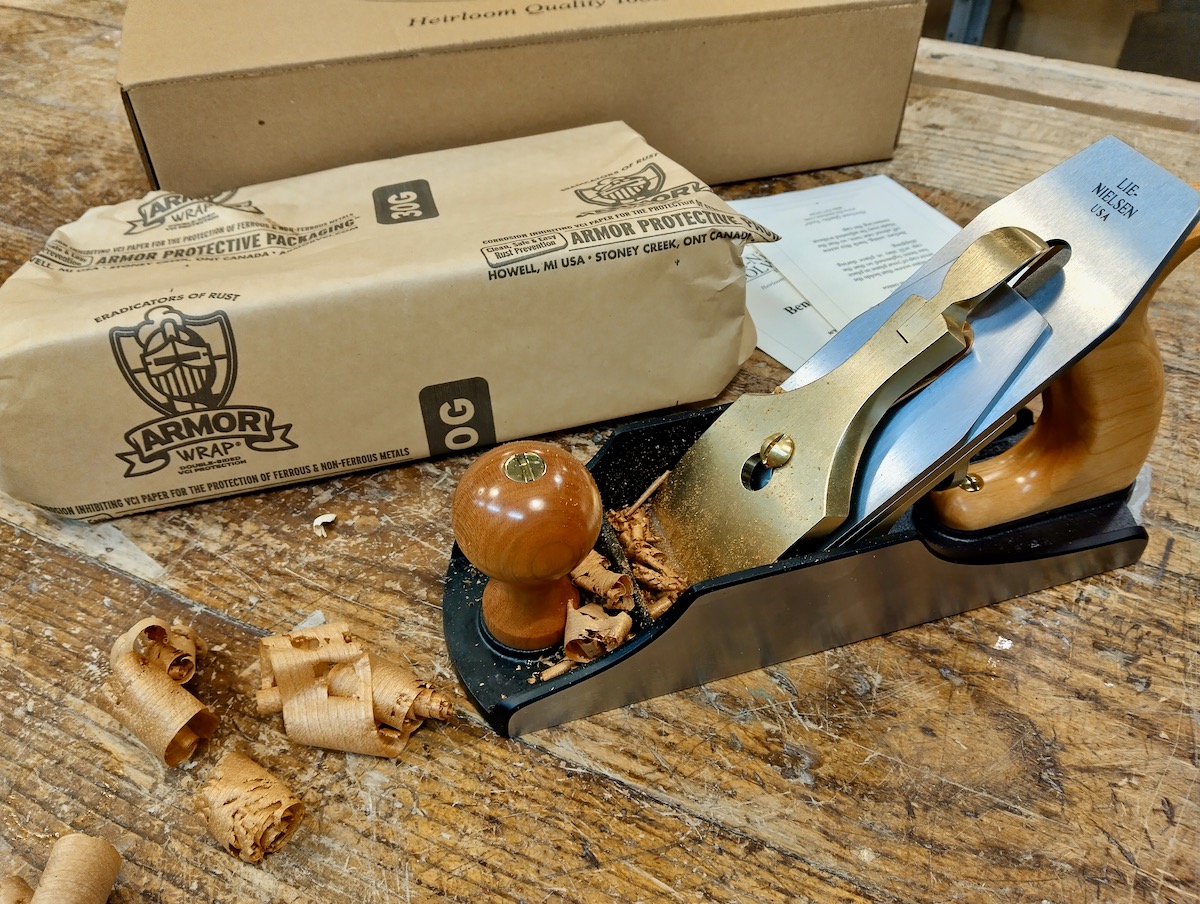
Last month, I ordered for us the Lie-Nielsen #4½ plane. I intended for that tour de force tool to be used by my most trusted students and to be wielded by me during that magical initiation moment when I showcase to our 4th-grade class the alchemy of transforming wood from a solid block to a soft fabric.
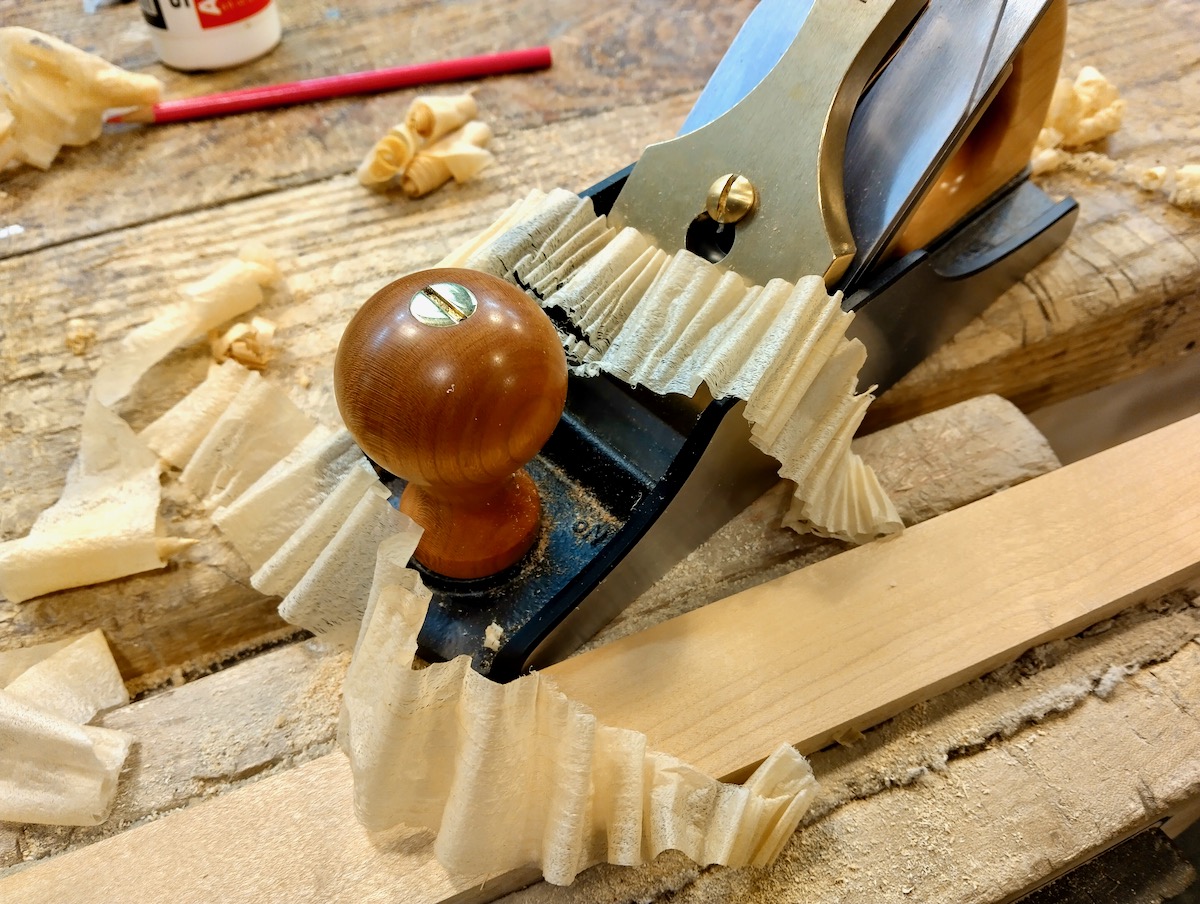
The Lie-Nielsen #4½ stands as a truly remarkable plane. Minted with the elegance of Japanned ductile cast iron, steel, bronze, and wood—a harmonious symphony of premium materials and craftsmanship—it carries a substantial heft that bestows a commanding presence to every stroke. Its perfectly milled components, combined with the remarkable feature of being ready for work straight out of the box, elevate it to the pinnacle of tool performance and value. Speaking of value, with a price tag of $360, this tool represents a considerable investment, even for the most affluent woodworking programs.
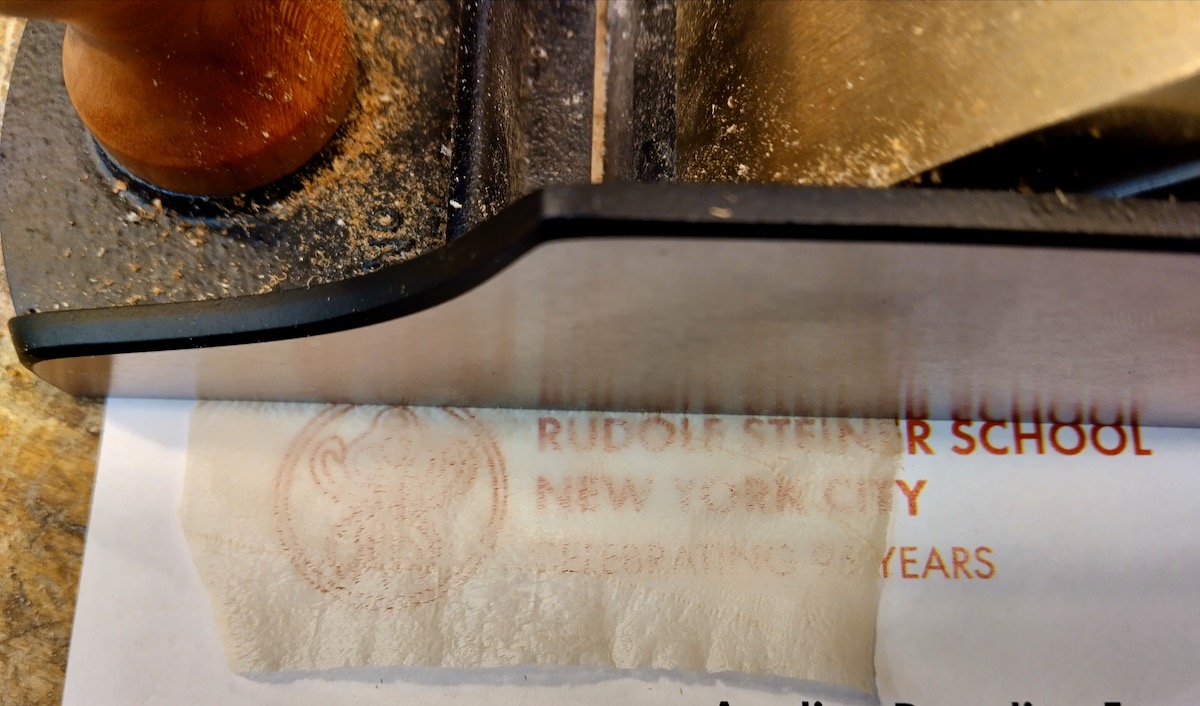
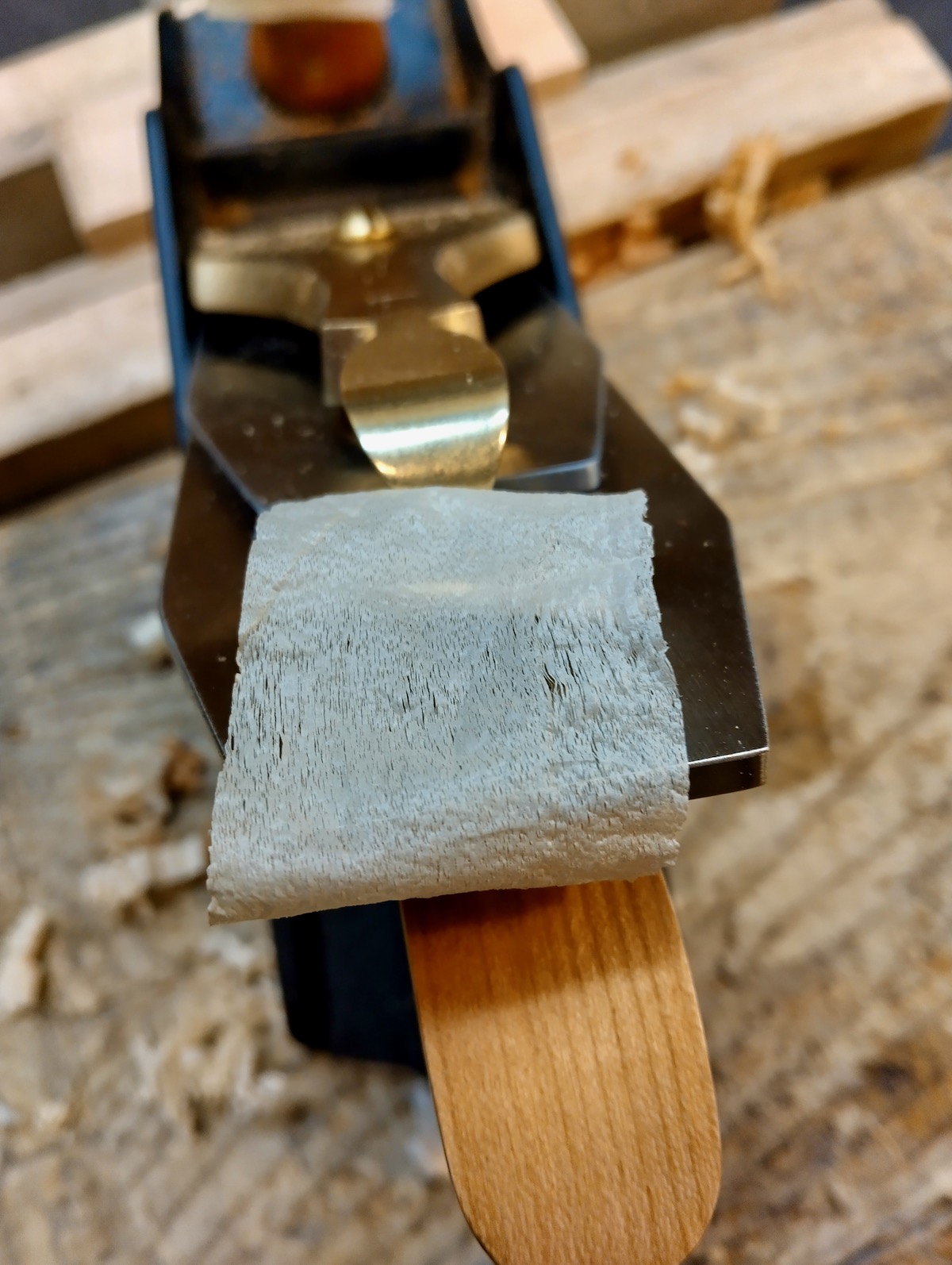
And while having exceptional tools, like the Lie-Nielsen #4½, can undoubtedly enhance the woodworking experience, I understand that not every woodworking program may have the budget for such an undertaking. Nevertheless, I truly think that in every craft and applied arts program, there is a value in acquiring a few tools that stand a tier above the rest.
On top of looking elegant, these tools not only outshine their counterparts in performance but also carry the significance of special occasion tableware saved for holidays. They elevate the craft, providing students with a tangible connection to the artistry of woodworking. Craft, like life, calls for moments of revelation and reverence. Introducing a tool of this caliber has the potential to transform a lesson into a memorable and meaningful experience. If skillfully orchestrated by the teacher, these moments have the power to linger in students’ memories, inspiring a profound appreciation for the art of woodworking.
Moreover, having a special tool that only trustworthy students can use becomes a powerful educational symbol, encouraging students to strive to demonstrate their worthiness. This rare and treasured tool, kept separate from the others, is only entrusted to those who have proven themselves in the craft, fostering a sense of accomplishment and responsibility among students. It becomes a worthy investment that significantly impacts pedagogy and shop culture.
The Lie-Nielsen plane, with its exceptional qualities, is such an instrument. Acquiring it not only enhances my program but also contributes to the preservation of a factory that has become a national treasure, reviving and safeguarding the high-end U.S.-made tool-making industry that once dominated the market.
Next time, I will delve into the intricacies of this plane and compare it to another Bedrock-style plane in our workshop.
Fine Woodworking Recommended Products

Stanley Powerlock 16-ft. tape measure

Olfa Knife

Veritas Wheel Marking Gauge

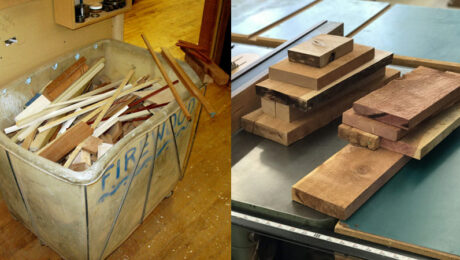
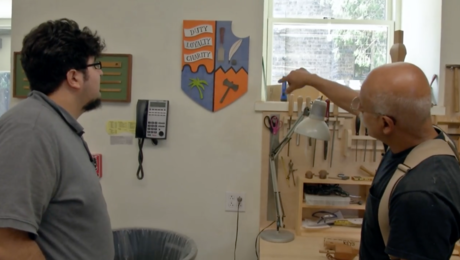
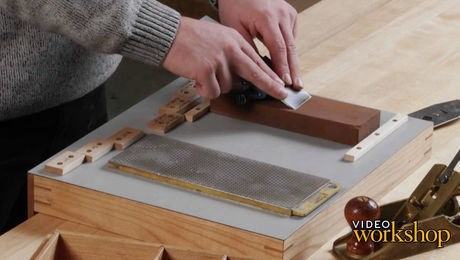


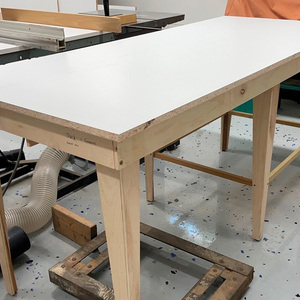
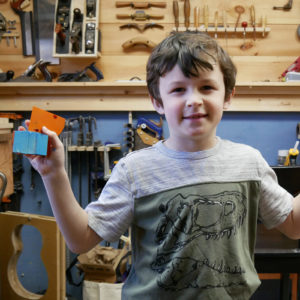

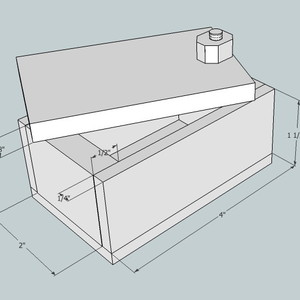















Comments
Informative and inspiring article. Thanks.
The imbedded links that direct the reader to the commercial sales sites---including that of a big box store---are of concern to me, especially noting that this article was published just days after the announcement of the recent sale of Taunton/FWW to AIM. Is this a step down the slippery slope that led to the demise of Popular Woodworking and others under such ownership?
I'm delighted that you found my article both informative and inspiring. Regarding your concerns about the embedded links, I want to assure you that their inclusion was solely my decision and not influenced by FW. The intention behind adding these links was simple—to provide my readers with a convenient and efficient way to access the products I mentioned in the article.
As discussed in my story, I cover a range of woodworking planes, including both high-end and budget-friendly options. Recognizing that not everyone may opt for the priciest tools, I included a link to all of them, including to the big box store that exclusively carries the most affordable planes I mentioned. Additionally, I highlighted another relatively affordable option on Amazon, where readers might find a better deal than the vendor's page.
My goal is to assist readers in making informed choices and cater to different budget preferences. I appreciate your feedback and hope this clarifies the reasoning behind the embedded links. If you have any further questions or concerns, please let me know.
Thanks for your reassuring response, Yoav. I have subscribed to FWW since Issue #1 and it has been the single most important influence in my lifelong enjoyment as an amateur woodworker. And indeed, my quiver includes a number of relatively low-cost, high-value tools whose acquisition has been influenced by articles in the magazine. It is my hope that the current ownership of Taunton will continue to attract and support staff and contributing authors who bring high quality articles such as yours to the magazine.
Tim,
Yoav already replied to your concerns, but I feel the need to add an asterisk. As stated in the footer of the website, from time to time there are affiliate links on the site. I think we've been doing them for a year or so now, so it has nothing to do with the change of ownership. But you can trust that the links would not have any sway on our editorial content at all. That said, if someone is going to click on a link that would be there regardless, and we can add some pennies to the bottom line, we will. We know our readers trust us and we intend to keep it that way. This is a hill I will die on.
Thanks, Ben. Your and Yoav's replies have gone a long way to addressing the concerns I expressed (which do not include any objection per se to earning from links) and give me renewed hope that we have many more good years of benefitting from the effort and contributions of the likes of you two.
Log in or create an account to post a comment.
Sign up Log in